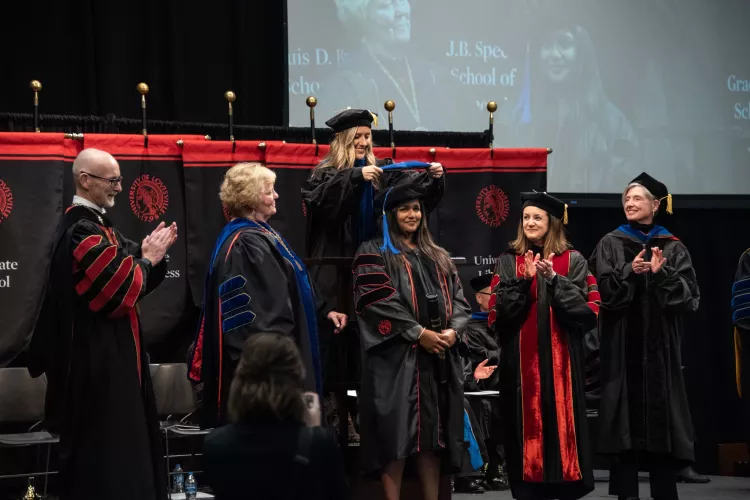UofL team nearly doubles participation for CPR training
October 2, 2024Stuart Crawford, patient simulation coordinator in the School of Medicine, and his team have four American Heart Association CPR courses scheduled for December. They facilitate approximately 375 courses per semester, so they’re comfortably in the home stretch on the year.
The UofL team is on track to train CPR to 1,000 total health care professionals and other members of the Health Sciences Campus this year. Those numbers have nearly doubled in the past few years, Crawford says, out of necessity.
“Over the last few years, it has become apparent that the CPR training needs of students, staff and faculty of the Health Sciences Campus were not being met,” Crawford said. “Currently, CPR training is available from a variety of sources at varying levels of quality and varying prices. Some of it is done online.”
Crawford doesn’t believe online training is as effective, however. His shop has about 30 adult mannequins for hands-on simulation. But he doesn’t want to make it a competition as much as he wants to raise awareness about the necessity of CPR training in general.
“The cardiac arrest survival rate in our area reveals that current CPR training in our area is a cause of one of the lowest survival rates in the country,” he said. “Our goal is to improve the chances of surviving cardiac arrest. We’d love to train as many people as possible.”
Right now, Crawford and his team train UofL’s medical, nursing and dental students, dental hygienists and other healthcare professionals. CPR training is a required course for those groups. CPR is also required for healthcare professionals who are involved in direct patient care to meet state licensure requirements or institutional policies.
More recently, his team started training UofL Physical Plant employees and non-UofL employees as well. The demands continue to grow and the team keeps itself busy, but that’s the point.
“The goal is to increase the chances of surviving a sudden cardiac arrest and, to meet that goal, it is essential to teach CPR to as many people as possible,” Crawford said. “We can do that because we have a dedicated team of instructors and state-of-the-art equipment. We can do that because we know it’s important. CPR saves lives.”



